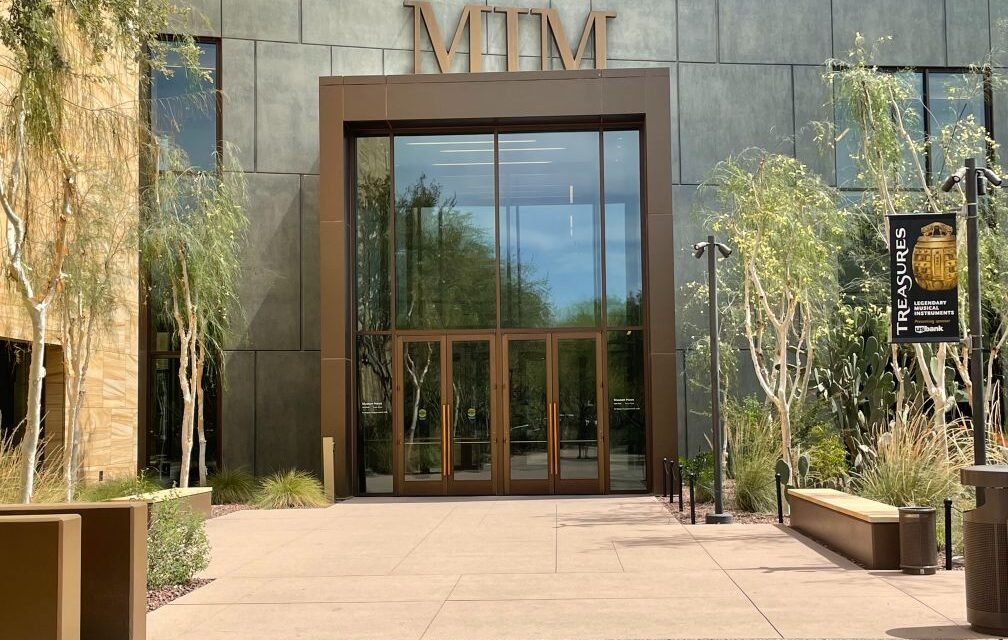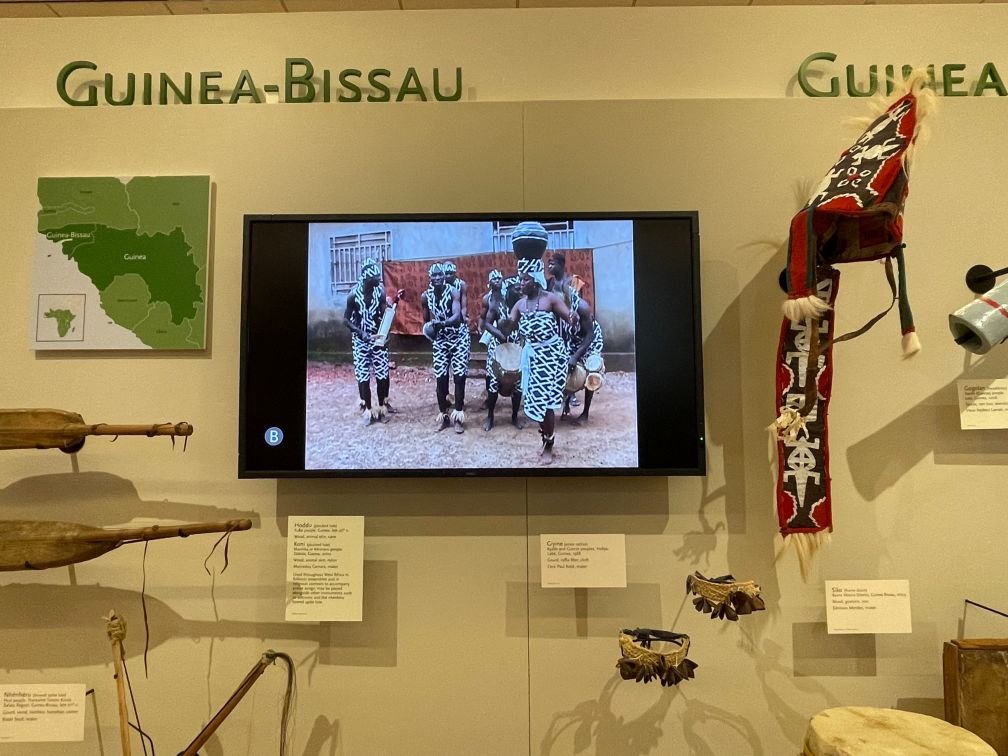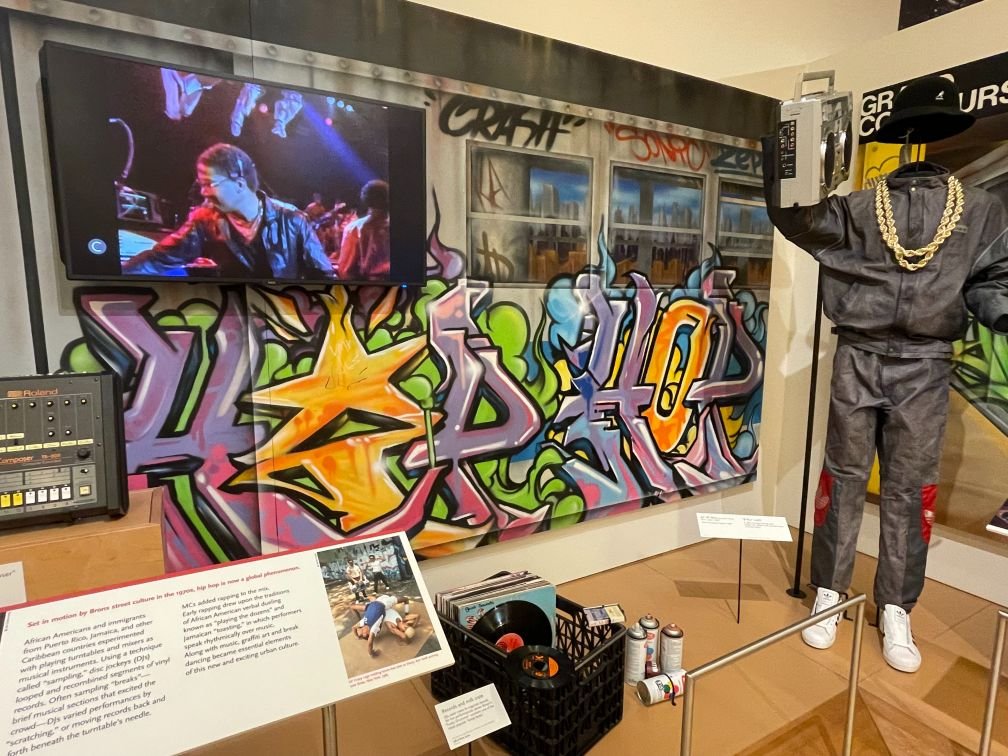
Celebrate the world of music at MIM

While in Phoenix visiting family recently, I went to the Musical Instrument Museum (MIM). I had read rave reviews about this top attraction and my interest was piqued. Plus, my sister-in-law, a Scottsdale resident, had only accolades for the place, which served to up the curiosity ante even more.
The museum, which opened its doors to great acclaim in 2010, is world-class. It showcases an extensive and expansive collection of instruments from more than 200 countries and territories in one place. MIM also brings these instruments to life through state-of-the-art technology, combining visual and auditory channels, to create an enriching, immersive experience for visitors.
MIM’s collection includes more than 13,600 instruments and associated artifacts that were acquired in the geographic and cultural regions where they are played. Some were donated by their makers or their owners and some were created by artisans specifically for the museum. Others were purchased from collectors. Much effort and time went in to getting the instruments, often requiring the museum’s experts to travel to remote locales and regions of political unrest.

Bagpipes from around the world

Air guitar!

Colofrul photos accompany the exhibits
Over 6,000 of these instruments and artifacts are on display in MIM at a time, primarily within the Geographic Galleries located on the second floor. Here you can learn and experience musical traditions from seven world regions: Africa, the Middle East, Asia and Oceania, Latin America, Europe, and the United States and Canada. Many of the instruments in the exhibits are rare examples, significant from an historic perspective, the finest of their kind or they are characteristic of distinctive musical cultures. And their names are as unique as the music they make – timba, marimba, balafon, rebab, ney, ghatam…
Each display showcases the instruments and the costume/dress worn by the people from a specific location that’s pinpointed on a map. There are monitors streaming identified video clips featuring musicians from the region playing the instruments to help put them in cultural context. Upon entrance to the museum, you’ll be given a headset to allow you to access these clips.
There are also displays of musical instrument manufacturers with accompanying video showing the intricate craftsmanship involved in making various instruments, such as the guitar and violin.

An Algerian type of lute played only by women

Guitar making workshop

Homemade South African guitars

Indonesian Gamelan

Harmonicas have a special section
The exhibit highlighting the U.S is divided into types of music, as well as regions of influence. Hip hop, country, Hawaiian, rock & roll, Native American, folk revival, electronic music, the Chicago Sound, Memphis – the Home of the Blues – and Philly, with its soul and funk roots, are just some of the genres and geographical areas presented.
The museum’s oldest instrument can be seen in the Orientation Gallery on the first floor. It’s a paigu goblet drum from China’s Neolithic period, estimated to have been made between 5000 and 4000 BCE. As for Western instruments, the 10-string guitarra española in the Guitar Gallery has this distinction. It’s from Portugal, circa 1590.

Instruments are accompanied by costumes

Whistles, flutes, pipes and a conch shell trumpet from Ancient Andes

Video clips are integral to the displays

Also on display in the Guitar Gallery is the air guitar, which is represented by an open guitar case. Next to it is an informational card stating that this instrument is made of “nitrogen, oxygen, argon, carbon dioxide and dreams.” And it’s played around the globe with world championships held annually in Oulu, Finland!
Additionally on the first floor is the Artist Gallery, where you’ll find instruments, concert footage and clothing of renowned musicians. In the nearby Conservation Lab, you’ll learn how instruments are preserved and restored. And in the Mechanical Music Gallery, you’ll discover a selection of mechanical musical instruments that play themselves, like cylinder music boxes, mechanical zithers, and barrel organs, that utilize a range of technologies including punched cards, electromagnet and paper rolls. It’s fascinating to see these devices from the late 19th and early 20th centuries and to realize they were harbingers of future forms of music and entertainment.
For those who’d like to try their hand at playing some unique instruments, head to the Experience Gallery. Let your inner musician shine while you pluck a Peruvian harp, drum on the West African djembe, play the Javanese gamelan, or make otherworldly music – without the slightest touch – on the theremin, and more. Let loose, have fun and celebrate your own self-made musical sounds. Anything goes!

Instruments small and large are on display from around the globe

Percussion on steroids!


Shell trumpets from Somalia
MIM is also known for its live music, hosting nearly 200 concerts annually in its onsite, 300-seat theater. It’s an opportunity to see and hear artists performing everything from rock and jazz to folk, Americana and the blues.
Though I spent several hours in the museum, it wasn’t nearly enough time to fully delve into its many wonders. I got a taste, but was left wanting more, much more.

The roots of hip hop


Stamping tubes from the Solomon Islands


































